Expecting a dissertation on the marvels of the modern Russia, we were surprised that the entire stay focused on the state of the nation before the Revolution of 1917. IN the minds of the Russians we spoke with, the two heroes of that period were Peter the Great and Catherine the Great who set the nation on a different track from their predecessors.
Our visit took us to Catherine’s Palace, the Yusebo Palace, the Peter and Paul Fortress and Cathedral and the ballet Swan Lake at Prince Mark’s Theater on the first day, the Winter Palace to include the Hermitage museum along with St. Isaac’s Cathedral and the Church of the Spilled Blood on the second day and a visit to Peterhof on the third day. This was a very compact tour schedule and we clearly had ‘palace overload’ following one tour group after another through the seemingly endless rooms to the massive palaces built by thousands of serfs over decades at the behest of each successive Tsar.
What this visit did do was change my perception of the Russian psyche. The opulence of the Tsars stood in stark contrast to the poverty, powerlessness and isolation of the average Russian citizen until only recently. Not only were they isolated from the world, but they were isolated within their country, existing to eke out a meager existence with heavy taxes paid to maintain the ruling class in extravagance beyond conception of the average person then or now.
It didn’t start out that way. Peter the Great was the descendant of a weak Tsar and thus he had to fight many to maintain his power. Rather than fight every day of his life, he chose to move the capital out of Moscow and leave all those who would seek to advise him to maintain things as they were, behind. During a visit to England he discovered how the British Navy made tiny England a great world power. He wanted the same for Russia. He realized he needed an outlet to the oceans. He looked to the Black Sea but was unsuccessful in winning the port he sought. So he began to look elsewhere. He wanted to bring Russia into the western world. He introduced many cultural changes along with moving the center of enlightened thought to a new city he established, which became St. Petersburg. What we found interesting is that the territory where he built the city and also Peterhof, where Peter spent most of his time, was actually part of Sweden when he started construction. He was fighting a war with the Swedes and assumed he would win.
Peter built an initial Palace in the early 1600s, which later became known as Catherine’s palace, as it was the place where she spent her summers. Peter’s daughter Elizabeth succeeded her father as Tsarina, tore down the palace her father built and had six more built on the spot. Each one did not please her in some respect. It was only the last that she agreed to live in, however, her son became Tsar soon after its completion. Her son married a minor princess from Germany who became Catherine II. Catherine’s husband died in what was described as a riding accident, however, most believe he was murdered to elevate Catherine, who others thought they could more easily control. However, Catherine proved to be a very intelligent woman, eluded their traps, and was able to maintain almost absolute power for thirty years.
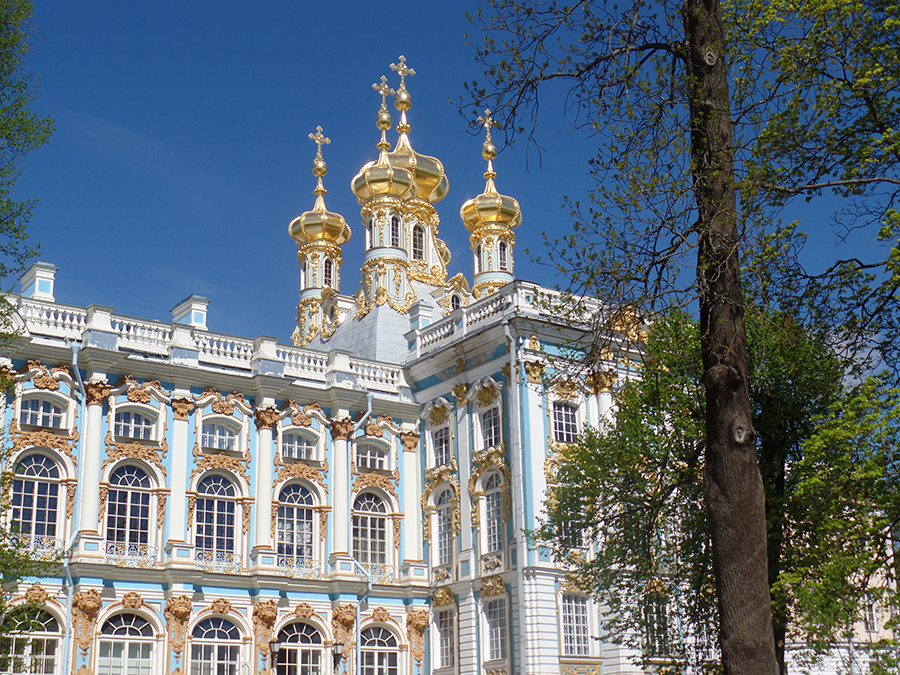
The next stop was the Yusebo Palace. It proved to be an interesting place to visit. In St. Petersburg, very close to the Winter Palace, it was the site of the murder of Rasputin, who was believed to have too much influence on Tsar Nicholas II, who was the last Tsar. Rasputin was a spiritualist, who assisted the son of Nicholas II to deal with a severe illness. However, he offered his advice on political matters as well, which often conflicted with that of the Tsar’s advisors. Rasputin was invited to the Yusebo palace to meet with the son of the family, who poisoned his food and drink. Yet it seemed to have no effect on the man. So he was shot four times and his body dumped into the harbor. When his body was recovered it was discovered that he had water in his lungs which indicated that he died from drowning, not the poison or gunshots. The Yusebo Palace was similarly ornate as the Winter Palace including a small theater where live performances were held. The Tsar and his family were frequent guests.
The Fortress of Peter and Paul was built to defend the growing city by Peter the Great. On its grounds is a Cathedral which houses the remains of Peter’s immediate family and also that of Catherine II. It also now houses the remains of Nicholas II and his family members to the extent possible as the bodies were not recovered until 80 years after their murder.
On the second day we visited The star of our time in St. Petersburg: the Hermitage museum. Our guide told us the museum has over 3,000,000 individual pieces of art. It would take a person, who spent no more than 1 minute looking at each artifact, for forty hours per week, over eight years to see everything. Apparently Catherine the Great started the art collection, commissioning individuals to acquire whole collections primary from Europe. Thus many lesser known works from masters to include Rembrandt, da Vinci, El Greco and so many others are found here. The Hermitage is a small building in itself, built by Catherine II as a place where she could be alone, and away from servants and advisors. She decided to display her art work in that building. After her death the collection continued and a massive addition to the Hermitage was built to house the growing holdings. Today the Hermitage includes not only these two buildings, but the entire Winter Palace and many nearby government buildings, each dedicated to one aspect of the collection. The difficulty with the Hermitage, is that it is very overcrowded with visitors, is not well laid out to a flow of visitors, and often it is difficult to see specific pieces of art that may be of interest. Our guide stated that it was her opinion that no one really knows what all the holdings are. Thus they do a very poor job of advising the visitors what is there or where it can be found. But just the visit to the palace, which is a work of art in and of itself would have been worthwhile. Adding the incredible holdings makes this probably the most important collection of art anywhere in the world. The visitor needs to be sophisticated to understand what she or he is looking at.
The Cathedral of St. Isaac was well worth the visit. We saw how the builders used capstan pulley systems to raise the single piece columns. We saw the only stain glass window in all of Russian Orthodoxy, and incredible mosaics. In one of the onion domes is a rare representation of what Jesus looked like as a teenager. The bronze doors depict historical events and battles. The cathedral played an important role in the siege of Leningrad (as it was then known) during the Second World War. Important artifacts were housed in the basement. Many families also took shelter there during the almost constant bombing and shelling of the city.
The Church of the Spilled Blood is the most recognizable structure in the city. It is one of the few colorful onion domed churches still standing in St. Petersburg. It got its name from the assassination of Tsar Alexander II by a bomb just outside the structure when he came to attend services here. The site has since been incorporated and commemorated inside the building, even though it had to be extended into what is now one of the canals in the city. The interior of the church is covered by typical Russian Orthodox painted iconography.
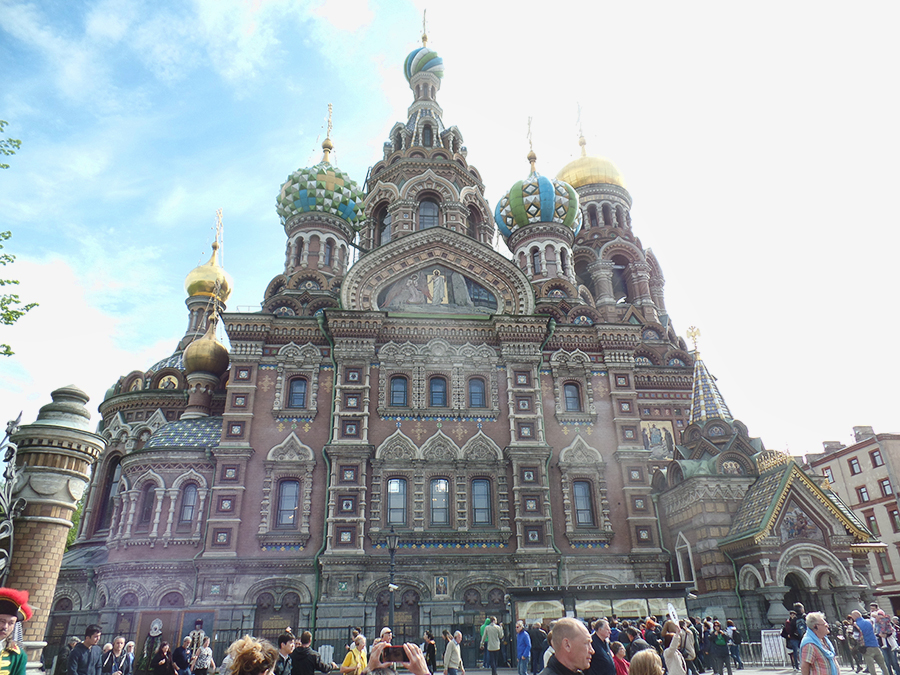
On the third day we visited Peterhof, which is about an hour from St. Petersburg by bus, but about 30 minutes by high speed hydrofoil that leaves from a dock at the site. Peterhof was the palace where Peter spent much of his time. His palace is down by the water and has an excellent view of St. Petersburg across the bay. His descendants built an immense Palace up the hill. The gardens between are on a similar scale with Versailles near Paris. The highlight is a massive fountain that was built immediately behind the Palace. Every day at 11:0 a.m. the fountain is turned on with a musical flourish. It must have been just an incredible sight for a first time visitor to the grounds when first constructed. The tour of the gardens also revealed that Peter the Great had a sense of humor as he installed trick water features that would soak unsuspecting visitors, who would either walk down one of the impressive tree lined paths or sit on certain benches that overlooked one of the many impressive fountains. In two of the fountains are Italian marble sculptures of Adam and Eve, however, they are a long distance apart and can only be seen looking down another tree lined path. Peter built the Adam fountain close to the palace where he lived, but placed the other closer to another building where his wife, Catherine I lived in their later years.
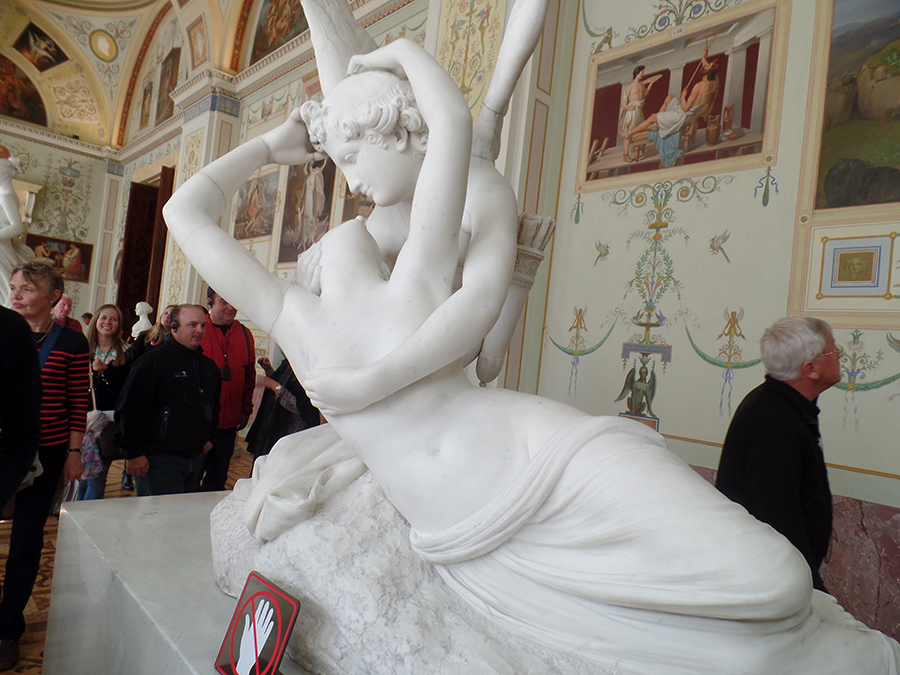
One can’t leave St. Petersburg without a note about the living conditions of most who reside there. During the Soviet period massive apartment complexes were built. Housing was free to all Soviet Citizens. However, our guide revealed that the average apartment for a single family was approximately 50 square meters plus a tiny kitchen and bath. At times two families would occupy the same tiny apartment, although they were generally related. Today that is beginning to change. Apartment buildings are being built by investors. Families are selling their communist era homes, which is allowing some to combine two apartments together to have a little more space. The apartment buildings were clearly not well maintained. The patios of many of the apartments were closed in because it was too cold to sit out on them in all but a few days a year. Our guide mentioned that St. Petersburg only averages about 39 fully sunny days per year. No wonder vodka was served at the lunches we ate in the city. In looking about the historical sites, while much spectacular reconstruction has been accomplished, allowing a visitor to understand the opulence of the monuments and museums, much of the deterioration is still evident. Much remains to be done to fully recapture the incredible beauty of the monuments, museums and lifestyles that marked the Tsarist period of Russian history.



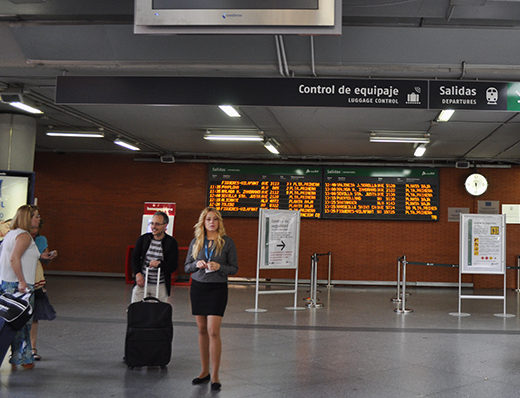
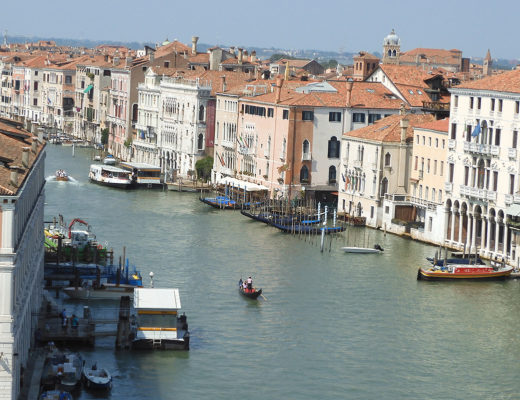
No Comments